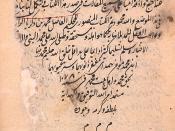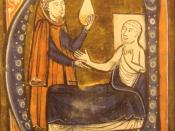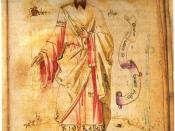The Islamic empire has made a profound impact on modern day society. Throughout the centuries, many ingenious Muslims have greatly contributed to numerous fields including math and sciences along with architecture, and literature. These developments along with numerous inventions have made an enormous impact on common day culture. In conjunction with isolated developments, Islamic society has also preserved and enhanced earlier developments, discoveries and philosophical notions. Overall, several of the most prominent Islamic contributions to modern society include that of science, mathematics and the school and educational systems.
Several Muslims have made a great impact in the field of science: particularly chemistry and medicine. Two very notable Muslims made great contributions to chemistry. Jabir ibn Hayyan is credited with being the founder of chemistry. He discovered sulphiric and nitric acid, using them to develop perfumes and alcoholic spirits. Al Razi is the man acclaimed for perfecting methods of distillation and extraction.
These discoveries helped lead the way to Jabir ibn Hayyan's discovery of sulphiric acid. Al Razi also refined ethanol allowing it to be utilized in medical fields. Finally, this man constructed the first modern chemistry lab. Many tools used in this lab are commonly used in science labs today.
Along with chemistry, the medical field was also greatly impacted by several Islamic people. The most prominent of which being Ibn-Sina. Ibn-Sina is credited with writing 278 encompassing philosophy, physics, theology, psychology, medicine, mathematics, logic and the Koran. Of all his works, 43 focused on medicine. These books discussed human anatomy, diseases, medical remedies and bone fractures. Ibn-sina's study of bone fractures probably had the most significant impact on the medical field. His books described methods of splinting the bone. He had specific methods for many bones including the skull, nose, sternum, ribs, arm and leg. He also emphasized...



Too plain
Too plain a vauge. You need more information.
1 out of 1 people found this comment useful.